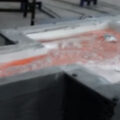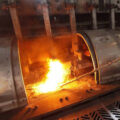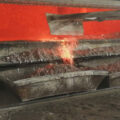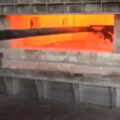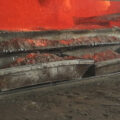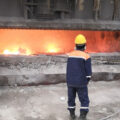Current status of aluminum alloy melt purification technology. At present, the comprehensive treatment of liquid aluminum purification and grain refinement is the basic problem for obtaining high-quality aluminum alloy. According to the different production links, the purification treatment of liquid aluminum can be divided into treatment in the furnace and treatment outside the furnace. The aluminum alloy furnace treatment can be divided into adsorption purification technology and non-adsorption purification technology according to the purification mechanism.
The purification by adsorption method mainly relies on the effect of adsorbing oxidized inclusions produced by the refining agent, while removing oxidized inclusions and hydrogen attached to the surface to achieve the purpose of purifying molten aluminum. Non-adsorption purification relies on other physical and chemical effects to achieve the purpose of purifying molten aluminum. The purification effect of the adsorption method only occurs on the adsorption interface, and the purification effect of the non-adsorption method acts on the entire aluminum liquid at the same time. The adsorption method mainly includes inert gas purging, active gas purging, mixed gas purging, chlorine salt (hexachloroethane) purification, non-toxic refining agent purification, solvent purification, etc.; non-adsorption method, mainly vacuum purification treatment method (Static vacuum treatment, dynamic vacuum treatment), ultrasonic purification treatment method, electromagnetic purification treatment method, pressure crystallization method, rare earth element hydrogen fixation method, etc.

When refining with chlorine in the adsorption purification treatment technology, chlorine and liquid aluminum generate aluminum trichloride, and aluminum trichloride and hydrogen generate hydrogen chloride, which has both physical and chemical effects. The refining effect is obvious, but it pollutes the environment and is harmful to the human body. Later, inert gas (nitrogen and argon) was used for refining, and even 99.999% inert gas was used, but the effect was not good and the cost was increased. Various methods are used to improve the refining process, but the effect of chlorine refining is always not achieved. In recent years, foreign countries have adopted mixed gas refining, that is, inert gas plus active gas, which can strengthen the hydrogen removal effect of the melt and help remove the inclusions in the aluminum alloy, and form dry slag on the surface of the aluminum alloy melt. Refining effect. Moreover, the mixing amount of chlorine can be conveniently controlled, and the impact on the environment is not large.
In the adsorption purification treatment technology, through process innovation and process transformation, many practical aluminum liquid treatment methods have been produced: such as inert gas rotating degassing, foam ceramic filtration, powder spraying treatment, and the combined use of rotating degassing and powder spraying treatment, etc. Multiple methods. Among the non-adsorption purification treatment technologies, the rare earth element hydrogen fixation method is also one of the future development directions.

